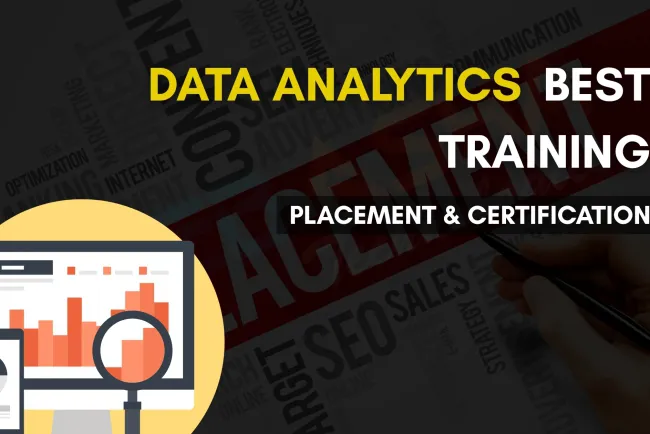Top 5 Cloud Security Trends in 2025 to Watch Out For
Explore the top 5 cloud security trends in 2025, including Zero Trust Architecture, AI-driven threat detection, and SASE adoption. Stay ahead of emerging cybersecurity challenges and secure your cloud infrastructure.

Table of Contents
- Why Cloud Security is More Critical Than Ever
- Trend 1: Zero Trust Architecture (ZTA) Becomes a Cloud Standard
- Trend 2: AI and ML-Driven Cloud Threat Detection
- Trend 3: Cloud-Native Security Platforms (CNSP) Dominate
- Trend 4: Data Privacy-Driven Cloud Compliance
- Trend 5: Secure Access Service Edge (SASE) Adoption Explodes
- Other Emerging Cloud Security Developments to Watch
- How to Prepare for Cloud Security in 2025
- Conclusion
- Frequently Asked Questions (FAQs)
As businesses continue their digital transformation journeys, cloud adoption has become the cornerstone of modern IT infrastructure. But as cloud computing grows, so do the threats to cloud security. The year 2025 is expected to bring not only more cloud innovation but also more sophisticated cyberattacks. To stay ahead, organizations must understand the key cloud security trends shaping the future.
In this blog, we explore the Top 5 Cloud Security Trends in 2025 that security professionals, cloud engineers, and enterprises must watch out for to protect their data and maintain compliance.
Why Cloud Security is More Critical Than Ever
The rise in remote work, hybrid cloud environments, AI-integrated platforms, and the sheer volume of data in the cloud have made cloud security a top concern for organizations globally. Threat actors are evolving, and so must the security strategies used to counter them.
Trend 1: Zero Trust Architecture (ZTA) Becomes a Cloud Standard
Zero Trust is no longer just a buzzword — it's becoming the foundation of modern cloud security strategies.
What’s Changing in 2025:
-
More cloud platforms will natively support Zero Trust principles.
-
Identity verification and least privilege access will be enforced at every layer.
-
Continuous monitoring of user behavior will replace static access control models.
Why It Matters:
In a multi-cloud world, perimeters are blurred. ZTA ensures that no entity is trusted by default, reducing the attack surface significantly.
Trend 2: AI and ML-Driven Cloud Threat Detection
As threats get more complex, traditional rule-based security tools are no longer sufficient. In 2025, AI and Machine Learning (ML) will dominate cloud threat detection and response.
Key Advancements:
-
AI engines will analyze real-time behavior patterns and detect anomalies faster.
-
Predictive analytics will help prevent zero-day vulnerabilities from being exploited.
-
ML algorithms will reduce false positives and automate threat remediation.
Business Impact:
Faster detection means less damage. AI-powered cloud security platforms will help companies stay resilient and proactive in their defense strategies.
Trend 3: Cloud-Native Security Platforms (CNSP) Dominate
2025 marks a shift from using bolt-on security tools to integrating cloud-native security platforms directly into infrastructure.
Features of CNSPs:
-
Embedded security across compute, storage, and networking layers.
-
Unified dashboards with compliance, monitoring, and risk analytics.
-
Integrated DevSecOps practices to secure code from development to deployment.
Benefits:
Cloud-native security improves visibility, scalability, and automation, especially in containerized and microservices environments.
Trend 4: Data Privacy-Driven Cloud Compliance
With tightening data privacy regulations across the globe, compliance-first cloud architectures will become essential in 2025.
What to Expect:
-
More emphasis on data sovereignty, especially in sectors like healthcare and finance.
-
Native support for global compliance standards like GDPR, HIPAA, and ISO/IEC 27001 in cloud platforms.
-
Automated tools for compliance auditing, policy enforcement, and data classification.
Why It’s Crucial:
Non-compliance can result in hefty fines and reputation damage. Cloud providers will respond with compliance-ready environments to attract regulated industries.
Trend 5: Secure Access Service Edge (SASE) Adoption Explodes
The rapid expansion of remote and hybrid workforces has accelerated the need for SASE frameworks — combining networking and security functions in a single cloud-native service.
SASE in 2025 Will Offer:
-
Integrated SWG (Secure Web Gateway), CASB, ZTNA, and FWaaS.
-
Unified access policies for users, devices, and locations.
-
Cloud-delivered security regardless of where users are connecting from.
Enterprise Advantages:
SASE provides a frictionless and secure access model, reducing latency and improving user experience, without compromising on security.
Other Emerging Cloud Security Developments to Watch
Apart from the top 5, here are additional 2025 trends that are gaining traction:
-
Quantum-resistant encryption to prepare for post-quantum cryptography threats.
-
Cloud security posture management (CSPM) to monitor misconfigurations.
-
Serverless security to protect functions-as-a-service (FaaS).
-
Greater emphasis on API security, especially with the surge in SaaS platforms.
-
Use of blockchain in identity and access management (IAM).
How to Prepare for Cloud Security in 2025
To stay ahead of these trends, companies and professionals should:
-
Upskill with cloud security certifications like CCSP, AWS Security, and Azure Security Engineer.
-
Conduct regular cloud security audits and pen testing.
-
Invest in cloud-native threat detection tools.
-
Build a Zero Trust roadmap tailored to their cloud environment.
-
Align security strategy with business and compliance goals.
Conclusion
The cloud landscape is evolving rapidly — and so are the threats. By staying ahead of the Top 5 Cloud Security Trends in 2025, organizations can secure their digital assets, maintain customer trust, and remain resilient in a dynamic cyber threat environment.
Now is the time to embrace cloud-native security strategies, leverage AI for smarter protection, and align with the principles of Zero Trust and SASE. Cloud security isn’t optional — it’s mission-critical.
Frequently Asked Questions (FAQs)
What is the biggest cloud security trend in 2025?
The biggest cloud security trend in 2025 is the widespread adoption of Zero Trust Architecture. Organizations are moving away from perimeter-based security and enforcing continuous verification, identity-based access, and micro-segmentation to mitigate sophisticated cyber threats.
Why is AI important in cloud security today?
AI and machine learning play a critical role in cloud security by enabling real-time threat detection, anomaly identification, and automated incident response. These technologies reduce response time, improve accuracy, and handle threats at a scale humans cannot match.
What is a Cloud-Native Security Platform (CNSP)?
A Cloud-Native Security Platform (CNSP) is designed to secure applications and data within cloud environments using tools built into the cloud infrastructure. CNSPs offer deep visibility, automated controls, and scalability across multi-cloud deployments.
What does SASE mean in cloud security?
SASE (Secure Access Service Edge) is a cloud-native architecture that integrates networking and security into a unified service. It offers secure and efficient access to applications regardless of location, ideal for remote and hybrid workforces.
How does Zero Trust differ from traditional security?
Zero Trust assumes no user or device should be trusted by default, even within the network. Unlike traditional security models that rely on firewalls and perimeter defense, Zero Trust enforces continuous authentication and minimal privilege access.
Is compliance becoming more important for cloud platforms?
Yes, data privacy regulations such as GDPR, HIPAA, and CCPA have made compliance a top priority. Cloud providers are now offering tools for automated compliance checks, data encryption, and regulatory alignment in 2025.
Can AI predict and prevent cyberattacks in the cloud?
AI helps predict potential threats by analyzing patterns and anomalies in real time. While it cannot fully prevent every attack, it significantly improves early detection and enables automated responses that reduce damage.
Are traditional firewalls still effective in cloud environments?
Traditional firewalls alone are not sufficient in cloud environments. Modern cloud security requires next-gen firewalls, identity-based controls, behavioral analytics, and cloud-native tools to secure virtual networks and workloads.
What is the role of automation in cloud security?
Automation enhances cloud security by handling repetitive tasks such as patch management, threat response, policy enforcement, and compliance checks. This reduces human error and accelerates incident handling.
How does cloud security support remote work in 2025?
Cloud security frameworks like SASE and Zero Trust enable secure, seamless access to applications from any location. These frameworks protect data in transit, authenticate users continuously, and prevent lateral movement by attackers.
What is the future of data encryption in cloud environments?
The future involves stronger, quantum-resistant encryption algorithms. Cloud providers are implementing advanced encryption for data at rest, in transit, and during processing, with full key management controls for users.
How can businesses prepare for cloud security challenges in 2025?
Businesses should adopt Zero Trust, invest in AI-based security solutions, train employees, conduct regular audits, and ensure compliance with privacy regulations. Security must be integrated into every stage of cloud adoption.
What industries benefit most from cloud-native security?
Industries with high data sensitivity—like healthcare, finance, and government—benefit the most. Cloud-native security ensures regulatory compliance, protects against data breaches, and supports rapid innovation in these sectors.
How does DevSecOps fit into cloud security?
DevSecOps integrates security practices directly into the DevOps pipeline. In cloud environments, it ensures that applications are built, tested, and deployed with security controls from the start, minimizing vulnerabilities.
What tools are essential for cloud security in 2025?
Key tools include Cloud Security Posture Management (CSPM), Identity and Access Management (IAM), Endpoint Detection and Response (EDR), Security Information and Event Management (SIEM), and AI-powered threat analytics.
What are common cloud security misconfigurations?
Frequent misconfigurations include open storage buckets, weak IAM policies, disabled encryption, and lack of MFA. Cloud Security Posture Management tools help identify and fix these automatically.
Is cloud security scalable for growing businesses?
Yes, cloud-native security solutions are designed to scale with your infrastructure. Whether you operate a startup or enterprise, these tools adjust to your usage patterns and workloads.
What are serverless security concerns in 2025?
Serverless environments are vulnerable to insecure APIs, event injection, and misconfigured permissions. Security best practices include validating inputs, using environment variables securely, and monitoring function behavior.
Can cloud security reduce operational costs?
Yes. Automated threat detection, centralized monitoring, and pay-as-you-go cloud security services reduce the need for expensive hardware and manual labor, making it cost-effective for many organizations.
What is the difference between cloud security and traditional cybersecurity?
Cloud security focuses on protecting virtualized environments, cloud-native apps, and data hosted off-site. Traditional cybersecurity often deals with on-premise systems and fixed perimeters. Cloud security requires agile, adaptive solutions for modern threats.












![Top 10 Ethical Hackers in the World [2025]](https://www.webasha.com/blog/uploads/images/202408/image_100x75_66c2f983c207b.webp)


![[2025] Top 100+ VAPT Interview Questions and Answers](https://www.webasha.com/blog/uploads/images/image_100x75_6512b1e4b64f7.jpg)







